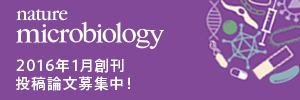PJ-156:Re-organization of symbiotic protist communities after sudden community mixing through the host termite hybridization
1Ibaraki University, 2University of Yamanashi
Re-organizaton processes and fates of biological communities after community “mixing” have not been sufficiently studied compared to those after community disjunction or fragmentation. In this study we investigated the degrees of assymmetry (dominance of the species from one of the parent communities) and stochasticity in the re-organization processes of intestinal symbiotic protist communities of insect hosts after the sudden community mixing. We used two termite species, Reticulitermes speratus and R. kanmonensis, which possess anaerobic protist communities in their guts with host-specific species composition. In a primary termite colony, the protists are transferred from king and queen to their offspring. We hybridized king and queen of the two host species and observed the dynamics of the symbiont species composition in the guts of primary colony members. The hybridization induced symbiont community mixing between the king and queen prior to the transmission to their offspring, and a majority of offspring initially possessed mixed-type faunae. After 700 days most colonies had symbiont community structures closely similar to R. speratus, while a single colony possessed R. kanmonensis-type community. These results show that the final communities resulted from the mixing is not a random assemblage of the species. The community structures of the parent host termites are stable, possibly reflecting long-time coadaptaions between the microorganisms. The community re-organization after the host hybridization event is strongly asymmetric, but at least at the colony-level, it is not completely deterministic.
keywords:Termite,Symbiosis,Community




